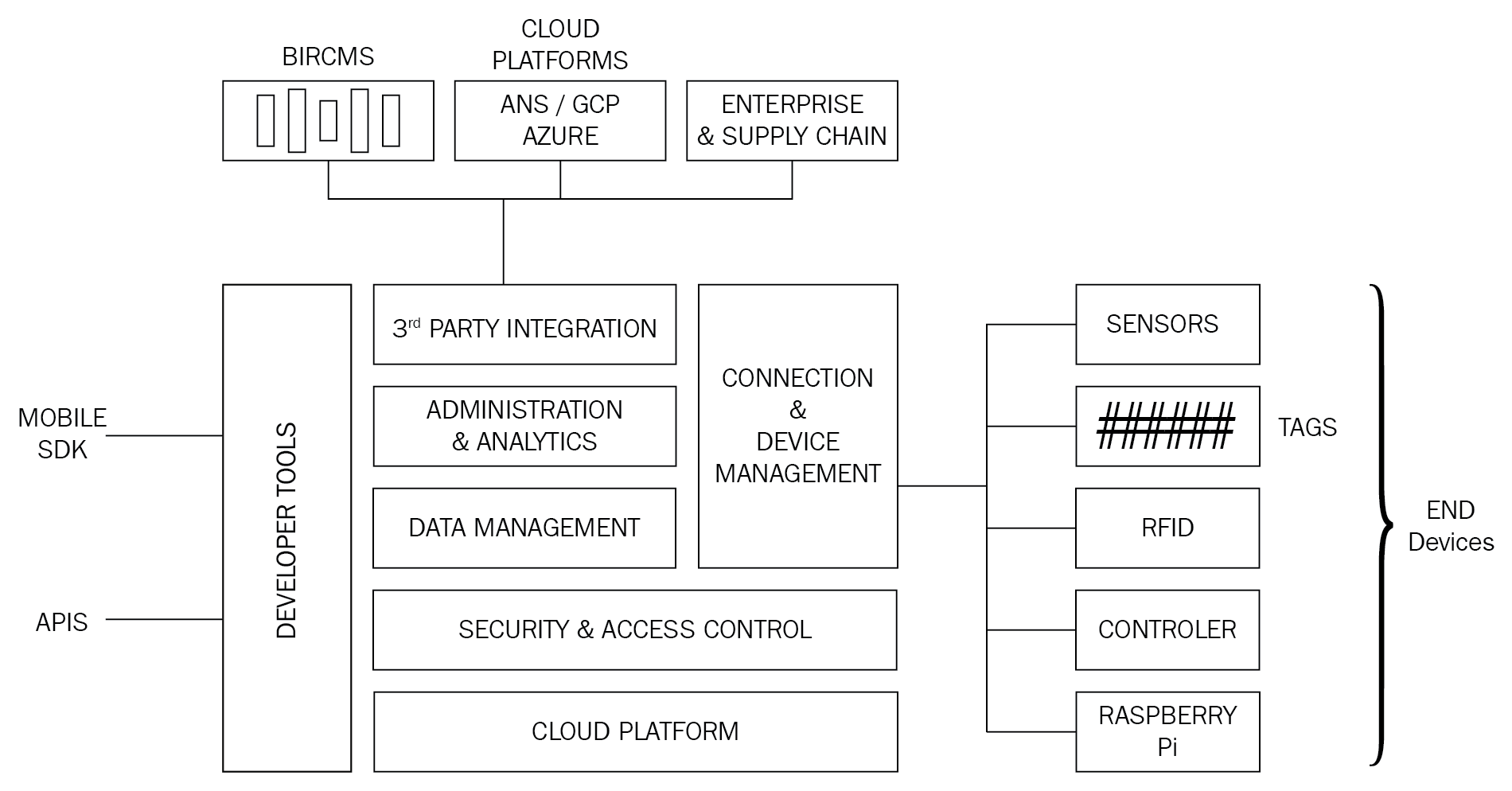Let's understand how an IoT ecosystem works with the help of an example.
Mr. Ghanshyam is the owner of a Cargo company that has a large number of trucks as part of its fleet. They provide transportation services to various other businesses across the country. Lately, he has been incurring losses in his business due to various reasons that he has not been able to identify and rectify.
His son Shyam, who works as an IoT engineer, gets to know about his father's business condition and decides to come down and assist him. He works with him over the next few months and observes a few major issues that are incurring losses. A few of the issues are listed here:
- High fuel consumption
- High maintenance costs
- Delivery delays
- High accident rates
Shyam, being an IoT engineer, knew what needed to be done to make the business profitable and easy to manage. Let's see what steps were carried out.
Shyam converted all the trucks of fleet into smart and connected one by fitting them with various sensors to measure vital stats such as fuel level, tyre pressure, engine condition, temperature, and others. Controllers were used to perform actions as per requirements, such as turning on lights when the sun set, turning on wipers when it rained, alerting drivers, and sending important information to the cloud with the help of Wi-Fi/GPRS/GPS modules over the internet. Cameras and other such devices were used to keep an eye on driver performance to get real-time data from a truck, as shown in the following figure:
A mobile application was developed to help drivers monitor the truck's condition in real time, navigate via the best route, and receive alert notifications and job/task assignments.
An admin/control panel application was also developed and was used at the command center by managers and operators to monitor all moving trucks, which were sending real-time data over the internet. This facilitated better fleet management in the following ways:
- Monitoring a truck's route to its destination; if the driver is going to a suspicious location, the engine can be turned off remotely.
- Monitoring the driver's conduct with the help of a camera inside his cabin. This avoids incidents of sleeping or talking over the phone while driving and sends an alert immediately.
- Navigating to nearby service stations in the case of a breakdown:
After taking all of the above measures the old fleet had now been converted into smart and connected fleet. The following figure helps us understand the architecture of the IoT solution deployed by Shyam:
Let's see how smart and connected fleets made Mr. Ghanshyam's business profitable:
- Fuel efficiency: Data received regarding braking, shifting gears, and speed helped to establish and improve the driving style of each driver, which in turn improved fuel efficiency. Also, checking on fuel levels periodically helped to curb incidents of fuel theft, which in turn reduced overall fuel cost.
- Maintenance costs and delivery delays: The sensors installed in each truck send vital information about engine health, brakes, electrical systems, and oil levels. This helps the operator to maintain the overall health of the vehicle through timely and preventive maintenance, hence reducing frequent breakdowns and delays, leading to substantial cost savings.
- Improved safety: Monitoring the driver's conduct using cameras and other sensor data helped detect aggressive, careless, and improper driving, which is always a threat to driver and vehicle safety. This data could be used to alert the driver, hold him accountable, and provide proper training for future improvement.
- Route optimization: By tracking a vehicle's current location and traffic condition using GPS, the shortest and best route could be suggested , resulting in the vehicle reaching its destination in the minimum time, reducing fuel cost, and saving time so more deliveries can be made and in turn increasing profits.
- Environmental impact: With improved vehicle conditions and taking an optimized route, lesser fuel is used, leading to less emissions of harmful gases.
Let's now look at the generalized architecture of an IoT ecosystem in the following figure. Here, we also explain the components of this architecture, such as what each component is, what role it plays, and how it is integrated with other components in the whole architecture:
The following is a brief explanation of the general IoT architecture:
- Sensors, tags, and microchips are end devices in the system that observe the environment and provide information about it.
- Connection management takes care of maintaining connectivity between end devices and the user/platform through various protocols such as HTTP, MQTT, and AQMP over the internet, and using Bluetooth and radio frequencies as well.
- Real-time data management helps collect and store data received from end devices in the database, which may be relational or NoSQL based on the type of data.
- Security and access control prevents unauthorized users getting access to the system, which then may be misused. Security is one of the most important building blocks in an IoT ecosystem; neglecting it may cause huge losses for enterprises and individuals.
- Cloud platforms facilitate the scalability, availability, and accessibility of the whole system with minimum downtime, which is very critical for a connected system.
- Administration and analytics components use all the data provided by a device to understand the behavior of the device and end user, which further helps in improving the service, performing preventive maintenance, and providing necessary alerts and notifications.
- Integration with other platforms such as social media, BI, and CMS, and enterprise and supply chain helps to bridge the gap between different segments of business.
- Developer tools help third parties to integrate their existing system seamlessly.




































































